8 Miles through Alaska, as Mrs. Parrott Rows; Or, Into the Archives!
[Updated and corrected!] On 19 January 1940 in a brief but tantalizing letter, a census enumerator named Mrs. Agnes Parrott outlined a most unusual adventure in enumerating. I smelled a story.
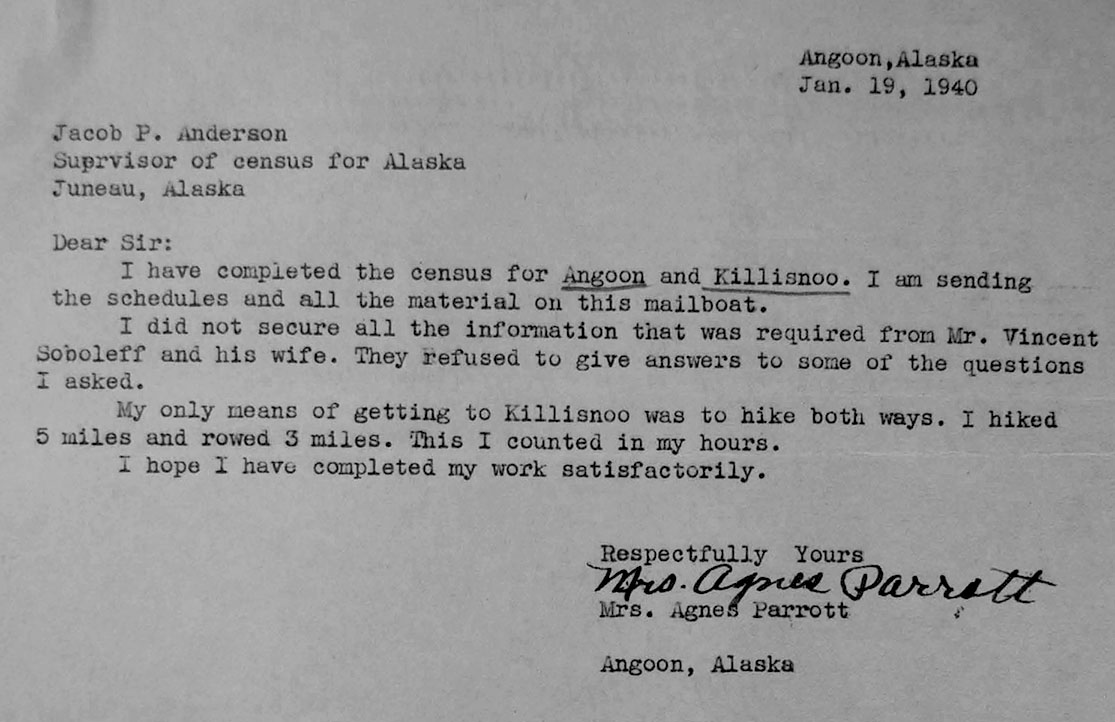
I recorded Agnes Parrott’s letter in my notes for the first time on 10 July 2018 right around noon. I had walked three miles that morning to the National Archives building, a marble temple to Democracy. I could have taken the Metro, of course, but being a historian means sitting for hours on end, leafing through crumbling paper, fighting the urge to go do something, anything, else. That is to say, I need that daily walk.
Being a historian also means that when I enter an extraordinary building, I seldom take the front door. While gathering materials for my first book on life insurance, I arrived early one morning at a midtown Manhattan skyscraper. I confess, I was excited to not just see the skyline, but to dwell (for a little while) within it. I informed the guards of my purpose and they dutifully filled out my visitor’s name tag. Then they directed me to the escalator.
The down escalator.
Leading into the basement.
In the building’s bowels.
Where the records rest.
<sigh> So much for the skyline. </sigh>
On 10 July 2018 I walked north from the DC mall and past the grand steps on Constitution Avenue that lead to the National Archives’ grand murals and the documents of American scripture held behind glass. I and my fellow researchers enter through the less magnificent doors on the ground floor on Pennsylvania Avenue. The bright side is: there’s hardly ever a line.^
Agnes Parrott walked to work too, but she did so on Uncle Sam’s business. In her case, she covered 5 miles by foot and rowed for another three. Those eight miles each way brought her from her home in Angoon, Alaska on Admiralty Island to the tiny island (and smaller village) of Killisnoo. Parrott made her trek on New Year’s Eve.
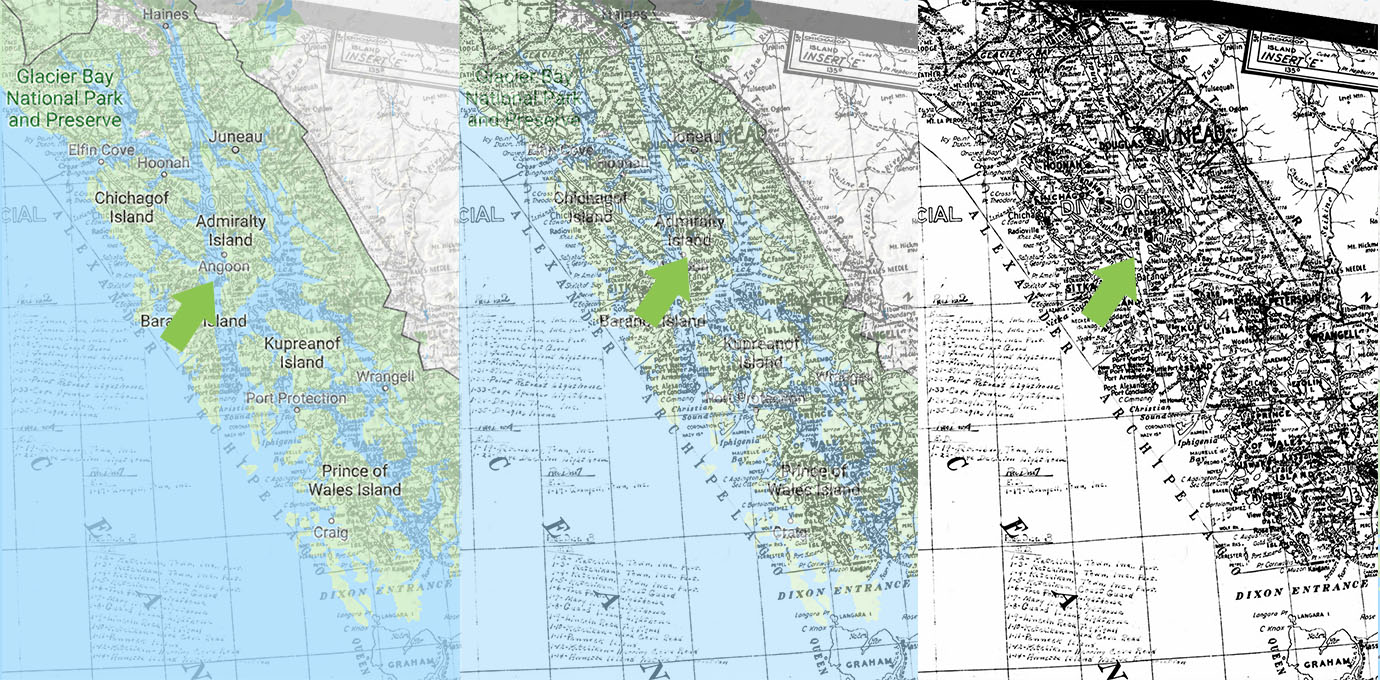
The records of Agnes Parrott’s journey are easy enough to summon, once you know how to navigate the record systems of the U.S. federal government. Historians making their first visit to the National Archives in College Park, MD (NARA II, we call it), can turn to Bill Rankin’s 2013 description of its ins and outs. But I do not know of an equivalent for NARA I in DC. I realized this when Meg Leta Jones told me about a (very cool) archival methods course she was teaching at Georgetown. So I decided to begin filling that gap and I sought inspiration (and a useful illustration) in Agnes Parrott’s journey. This essay does not provide a comprehensive explanation of NARA I, but I hope it can still prove helpful to many researchers and especially those interested in digging further into the history of the census.
Online search is not your best friend as you begin your hunt for useful documents. That’s not to say the National Archives Catalog is useless. But it won’t get you to Agnes Parrott. Instead, you’re better off heading straight to the Guide to Federal Records and its entry for Record Group 29 “Records of the Bureau of the Census.” There you can find an overview of the collections and a vague sense of what might be available. It will show you, for instance, that the archives have a lot of administrative records from the early twentieth century censuses. This will give you hope. But if you search within the guide for “Alaska” you will find only two entries. This will sap your hope.
But do not let it. To find Agnes Parrott in Angoon, Alaska you have to trek to the archives in person! But it is highly unlikely your journey will involve any rowing!
Once you make it through security, you’ll need to go through a short orientation and get your researcher’s card. This is all simple enough, and the NARA website covers the details well. The first pull (that is, the first time the archive staff will go gather the materials you’ve requested) is 9:30am and you might just get a request in my then if you arrive by 8:45am when the archives open. There are lockers available inside (so be sure you bring a quarter!), many big enough to hold the roller bag you’ll need to take with you so you can catch your bus or flight after you squeeze in one more full day of digging through records.
Once you’re properly credentialed, you can finally see the Binder and the Carton! I cannot underestimate just how important the Binder and Carton are—without them, we’d be lost and Agnes Parrott’s story would lie forever hidden.
The Binder and Carton sit on a shelf filled with binders and small archival cartons just to the right when you enter the main room (the Research Center) on the first floor. The room you want sits next to the Innovation Hub (which I have never entered or seen anyone else enter). Sign in with your research card number and head to the far end of the room. There you’ll find a black binder labeled RG 29 and a grey archival carton called (brace yourself) “New HMS Record Groups 11, 21, 28, 29, 42, 66, 85, 116, 123, 132, 172, 205, 210, 267, 279, 302, 308, 328, 351, 418, 435, 482, 516.”
The binder contains descriptions (vague, but much better than nothing) of (some of) what’s in RG 29. It’s a tool for narrowing down your search, for gaining context, finding “entry” numbers. But the truly necessary tool is in the carton. It’s just a manilla folder labeled RG 29, filled by loose sheets of copy paper. Each page lists a half dozen or more collections, organized by entry numbers. It is here that one can find the physical address for a collection: a space on a shelf of either the building’s East or West wings. How much space each takes up depends on the collection—some are just a few boxes, but others stretch on for dozens or more. To take an example that’s on the smaller side, entry A1-389-E consists of 4 small archive boxes filled with some of the papers of a census director, A. Ross Eckler. The entry from the carton file looks like this:

I’ve added labels (in black) from 1 to 8. For larger collections that span multiple shelves, 5a will differ from 5b, and ditto for 6a & 6b and 7a & 7b. But in this case, they’re the same. Those numbers correspond to the numbers I’ve added to this photograph of a pull slip I filled out to request Eckler’s papers:
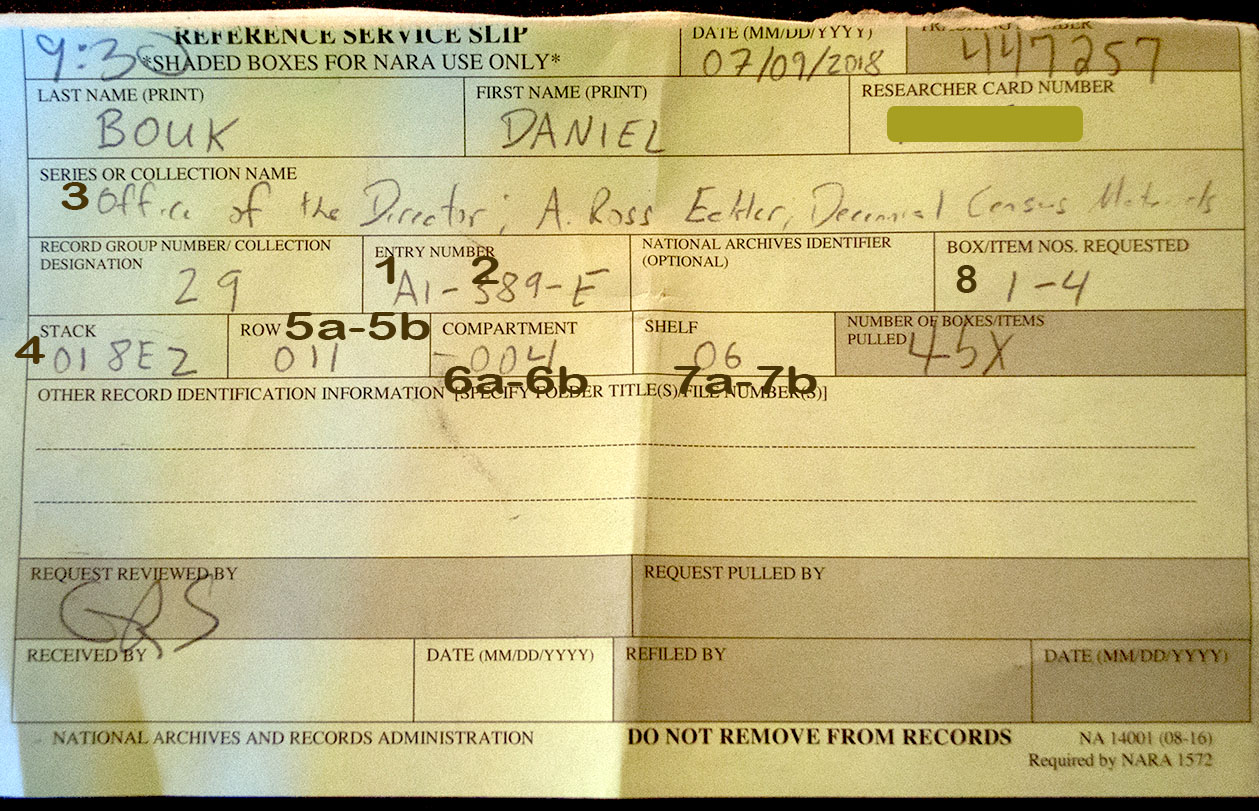
Once you learn these correspondences, you can fill out a slip based on any entry in the file in the carton. A reference archivist will check the slip once you’re done and the submit it for retrieval. That’s your cue to head upstairs to the second floor, to await the arrival of the requested boxes after the next pull-time in the main reading room with its grand, vaulted ceiling and stately wood paneling.
The collection housing Agnes Parrott is, in comparison to that Eckler collection, practically Alaskan in scale. It contains 13 boxes stretching over 5.6 linear feet. (For context, if I can photograph relevant material from a few boxes in one day, I am very pleased.) And those are only a portion of the boxes that hold materials from America’s 1940 territories (Hawaii and Alaska) and its possessions (which was the polite way of saying “colonies”).^^
The Binder doesn’t mention Agnes Parrott, but it places entry 252 within the “Records of the Division of Territorial, Insular, and Foreign Statistics,” which helps. Armed with the entry number, I duck over to the Carton and find the relevant entry in the file folder for RG 29:

(I’ve added the numerical labels so you, dear reader, can practice filling out your call slip at home!)
Alaska was—and is—very large. The Department of the Interior made that point visually in 1940:
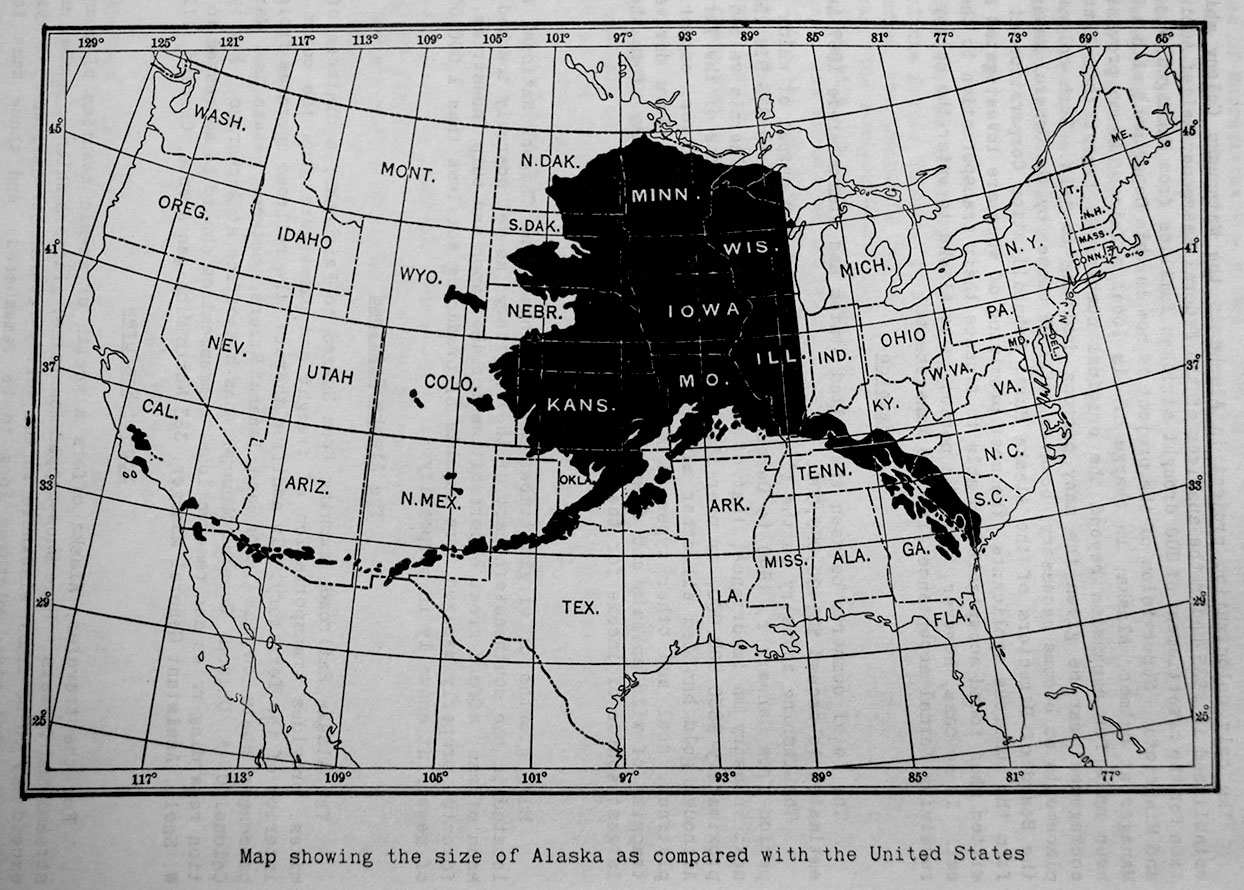
While all other enumerators for the 1940 census began their work on 1 April 1940, Alaska’s census takers began on 2 October 1939. Alaska was too big, its infrastructure too spotty, and its people too diffusely spread to be counted in only two weeks. In fact, some enumerators even began working in the spring and summer of 1939 or into the following year’s summer so they could get to places made unreachable by winter snows and freezes.
To find Agnes Parrott’s enumeration district, we must begin with the census maps for Alaska. They, like all 1940 manuscript census enumeration sheets, have been digitized (with public subsidies) and are hosted on private sites like Ancestry. These maps, excerpted in the first section of this essay, show Angoon to be located near Juneau in Alaska’s First Judicial District in Enumeration Distict (E.D.) 1-38. With that information we can find and browse the census sheets for Angoon and Killisnoo.
Sure enough, on the first sheet we find, in the upper right hand corner:

Mrs. Agnes Parrott! There she is.
But who was Agnes Parrott? Keyword searching works pretty well within the digitized manuscript sheets. Indeed, Mrs. Agnes Parrott pops up as one of the first ten search results for “Agnes Parrott” who experienced some statistically significant life event in Alaska in 1940. (She’d have turned up higher in the results had her named not been misspelled by whichever volunteer entered her data into the database.^^^)
Parrott, it turns out, enumerated herself. The Census Bureau preferred for this not to happen. People often surveyed neighboring communities, but were not supposed to count their own. In practice, however, they sometimes did, and not just in Alaska. Parrott counted herself on 28 December 1939. She told herself the following: she was 31 years old, married, and head of her household. There is no mention of Mr. Agnes Parrott. (Maybe he still lived in Washington state, where Agnes had lived 5 years earlier.)
Parrott made her living as a teacher at a U.S. government school, most likely one operated by the Bureau of Indian Affairs, where she earned $1,200 a year. She rented a 4 room apartment for $9 a month. Parrott identified herself as “Indian,” (a racial category in 1940) and choose “Tlingit” as her “linguistic stock.” (The story of where these racial and linguistic categories come from will, once again, have to wait for another day.) She reported having completed two years of college.
Parrott began her count on 29 November 1939 in Angoon village. The next day, on 30 November, she encountered the Soboleffs. Her letter indicated their unwillingness to cooperate with the census, but did not specify further. Reading the manuscript sheets alongside the archival documents, we can fill in some of the blanks. We can write a Census Story.
Parrott recorded Vincent Soboleff as white, male, aged 57, born in CA with third grade education. He was married to Sara Soboleff, who was also 57 and white, but she was born in Maryland and reached the ninth grade. Vincent reported owning a general store. The digitized sheet declares that Vincent earned no wages but did have $50 or more in income by some other source.
But look at the pen markings on that sheet, excerpted here:

Parrott wrote with thick, dark steams of ink. On the far right, the “0” and crossed out “none,” (answering the question about wage income) and “yes” (indicating the individual earned at least $50 apart from wages) all appear to be written in another hand. I suspect they were added later by a Census Bureau reviser or by Parrot’s Alaskan supervisor in Juneau.
The Soboleffs, it seems, refused to answer the new income question and someone later on guessed at the right answer (or close enough). That may not seem all that surprising, given the sustained controversy ginned up around that question by NH Senator Charles W. Tobey. As I’ve written previously, Tobey and his Republican allies turned the new income question into a significant plank in their fight to knock Roosevelt from office. In response, many Americans all over the nation (and more than the Census Bureau admitted) either overtly refused to answer the question or resisted by answering that they earned $0 in wages supplemented some other undisclosed income. Whoever filled in the Soboleff’s final columns translated their refusal into mere resistance.
The odd thing about this case is that the Soboleffs refused the question four months before Tobey turned a spotlight on it. It seems that some Americans did not need any prodding to grow indignant about new government prying. The particular circumstances in Angoon must have shaped the Soboleff refusal, too. The questioning crossed complicated lines of race, gender, status, and education. Parrott was a college-trained teacher confronting a person who never made it past the third grade. Soboleff was a white man being asked about this financial affairs by a Native American woman. Such differences might have generated tension anywhere, but I suspect they would have been amplified thousands of miles from Washington, D.C. in one of the nation’s territorial peripheries, where an Alaskan-born enumerator dared ask such questions of two people native to the lower 48.
Parrott finally made it to Killisnoo on 31 December 1939. All her hiking and rowing only turned up 24 people to be enumerated there. But Killisnoo was not the farthest site afield in E.D. 1-38. An enumerator named Oliver T. Edwards completed the count as he moved from a fox farm through various fishing camps to a gold mine.
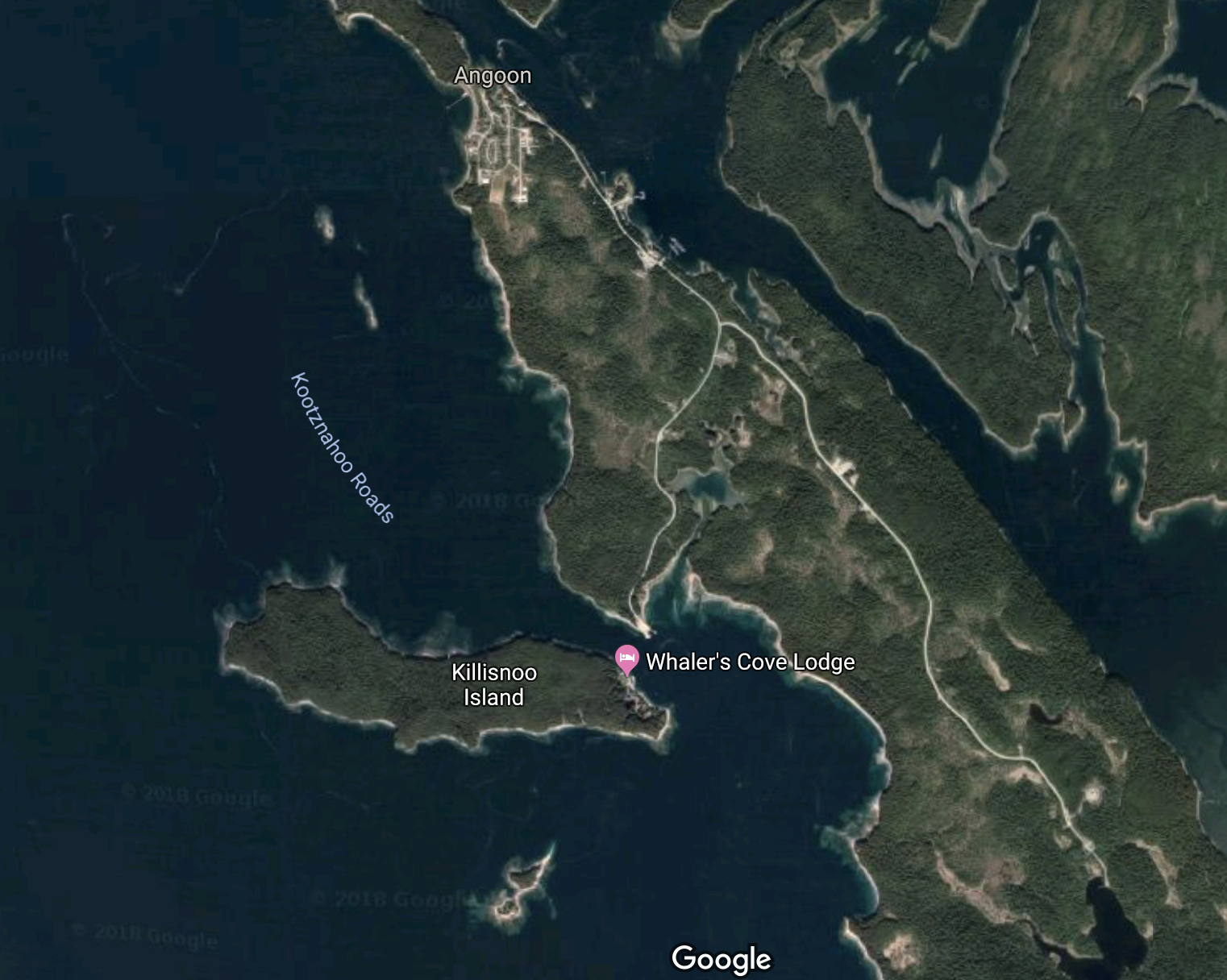
So who was Edwards? Here the archives provide a ready answer. Immediately preceding Parrott’s letter was another letter, this one on much higher quality paper stock from a functionary in the U.S. Department of Agriculture’s Forestry Service to Edwards (dated 27 September 1939) announcing he had been made a Special Agent for the census responsible for counting those living outside the region’s main settlements.
Edwards was the obvious choice for the job. His ship, the Forester, would bring him to Admiralty Island soon anyhow. Counting humans would not be that different from the task that brought him there in the first place.
He was on bear patrol.
^ The same goes double for the Library of Congress where lines to get in via the steps often stretch down to the street, while researchers (defined as people who say they want to research) usually get to walk right in (through the entrance under the stairs, although one still must pass through a metal detector and have one’s belongings x-rayed).
^^Alaska and Hawaii only became states in 1959. The Philippines, a commonwealth supervised by the U.S. War department, conducted its own census in 1939 and so data pertaining to that country’s enumeration is largely excluded from this collection.
^^^I do not mean to criticize. It can be extarordinarily difficult to make out many of these names and enumerator handwriting can be very difficult. I appreciate very much the volunteer effort that went into making this searchable resource.